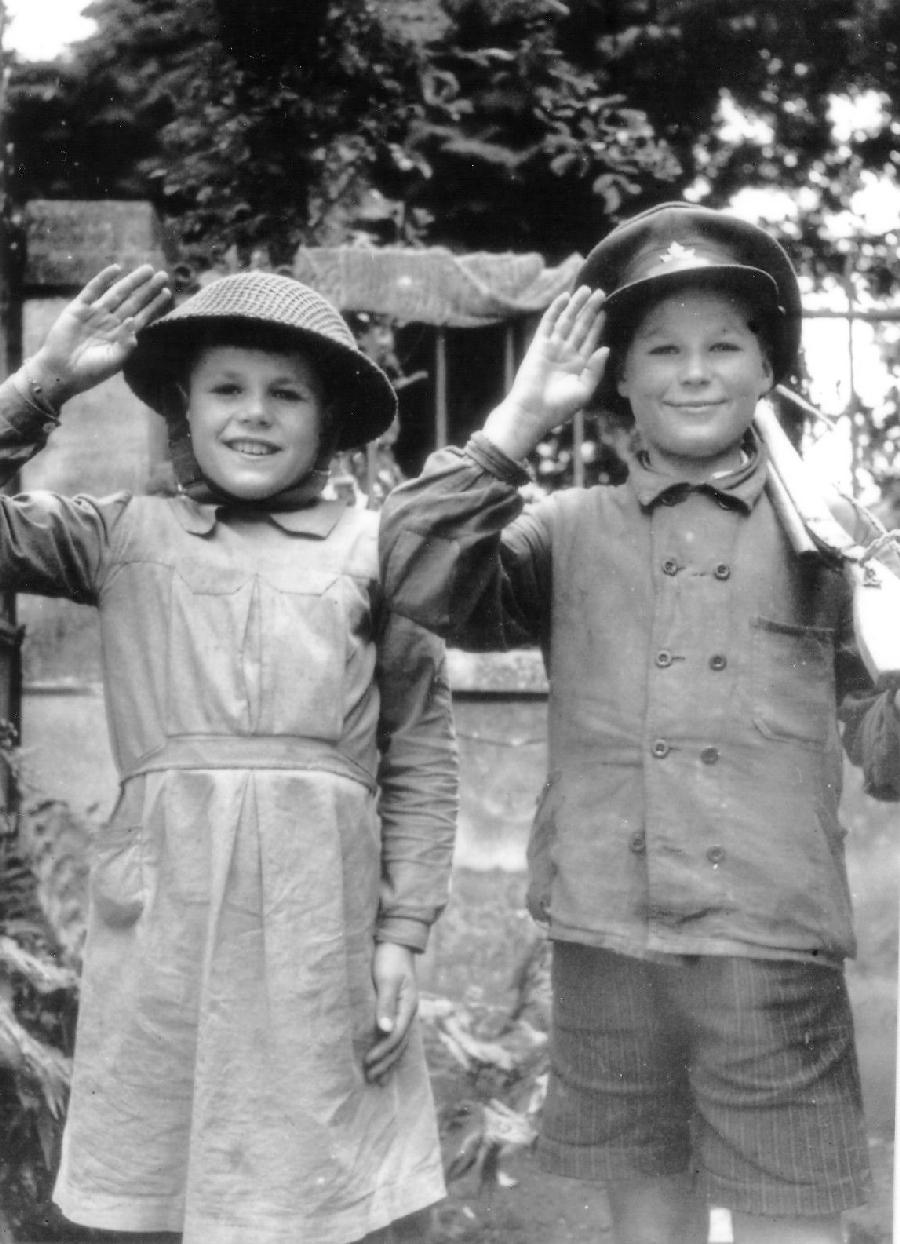
Supreme Headquarters Allied Expeditionary Forces (SHAEF): Northwestern Europe --Allied Armies

Figure 1.--These French boys in Normandy, have clearly made friends with Canadian soldiers part of Field Marshal Montgomery's 21st Army Group. Notice the mapel leaf cap badge. They have even mastered the British salute. The press caption read, "French brothers Guy and Michel Pierre, 10 and 13, pose in Canadian cap and helmet in the true spirit of the liberation of France by Allied forces, June 28, 1944." At the time very heacy fighting was going on in Normandy. The Epsom Operation continued to the west of Caen. The two top German commnders, Rommel and von Rundstedt, had been ordered to Germany to meet with Hitler to discuss the situation in Normandy. The meeting did not go well.
|
|
The Allied armies with the breakout from the Normandy beachhead were reorganized in the forces that liberated France and drove into the Reich. President Roosevelt had wanted northern Germany as an American occupation zone. This proved impossible because of the location of the training camps in Britain. The British and Canadian camps and embarcation points were primarily in the east (Kent, Sussex, Surrey, and further north) and the American camps primarily in the west (Dorset, Somerset, Devon, and further north). This preordanind that the British would get the eastern Normandy beaches (Sword, Juno, and Gold), and and the Americans the western beaches (Omaha and Utah) and as a result the British and Canadians would get the coastal area to drive north into Belgium and the Netherlands while the Americans would drive into central France and Germany. With Dragoon and American French Army was formed to liberate northeast France and drive into southern Germany. Gen. Eisenhower was the overall commander of Supreme Headquarters Allied Expeditionary Force (SHAEF) for both D-Day and then the resulting campaign on the cotinent. Field Marshall Montgomery was the land commander for Day (June 1944), but then the Allied forces were divided into three national army groups (July). Montgomery was given command of the British-Canadian 21st Army Group comprising the left (northern) flank of the Allied armies. Gen. Bradley commaned the American 12th Army Group comprising the center. Gen. Devers commanded the American-French 6th Army Group which when the Dragoon landing force joined up with the forces pushing out of the Normandy beachead became the Allied right (southern) flank. The D-Day landings had been about an equal British-Americn effort. With the build up in Normandy the Americans became the major coalition partner. These three Allied army groups formed one continous broadfront against the Germans. When the Germns made their final desperate offensive in the Bulge, they struck at the seam between the British and Americans. There were strains between the national commanders involved. Montgomery who basically thought he shold be the SHAEF commander proved to be a special problem. At first there was a conflict between Montgomerty and Patton, but Montgomery managed to eventually alienate vitually all the senior American commanders, including Eisenhower. Despite the challenge, Eisenhower showed himself to be masterful coalition leader, even bringing Monty to heel. Ike along with Roosevelt and Churchill was key in making the Anglo-American alliance the most important and succesful military coaltion in history.
CIH -- WW II

Navigate the CIH World War II Section:
[Return to Main liberation of France page]
[Return to Main Vichy page]
[Return to Main D-Day invasion page]
[Return to World War II: France]
[Biographies]
[Campaigns]
[Children]
[Countries]
[Deciding factors]
[Diplomacy]
[Geo-political crisis]
[Economics]
[Home front]
[Intelligence]
[Resistance]
[Race]
[Refugees]
[Technology]
[Bibliographies]
[Contributions]
[FAQs]
[Images]
[Links]
[Registration]
[Tools]
[Return to Main World War II page]
[Return to Main war essay page]
Created: 7:19 AM 10/30/2017
Last updated: 7:19 AM 10/30/2017



